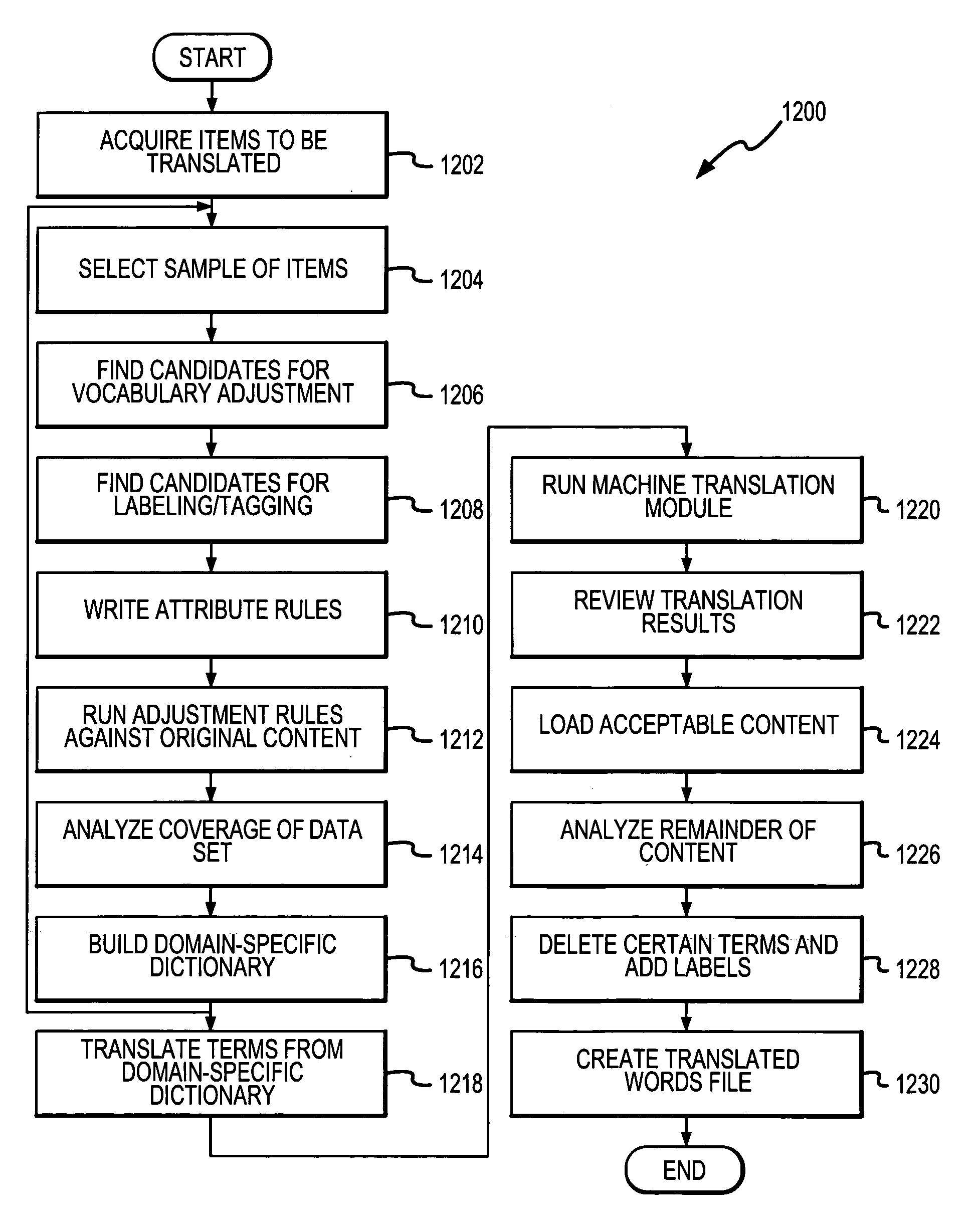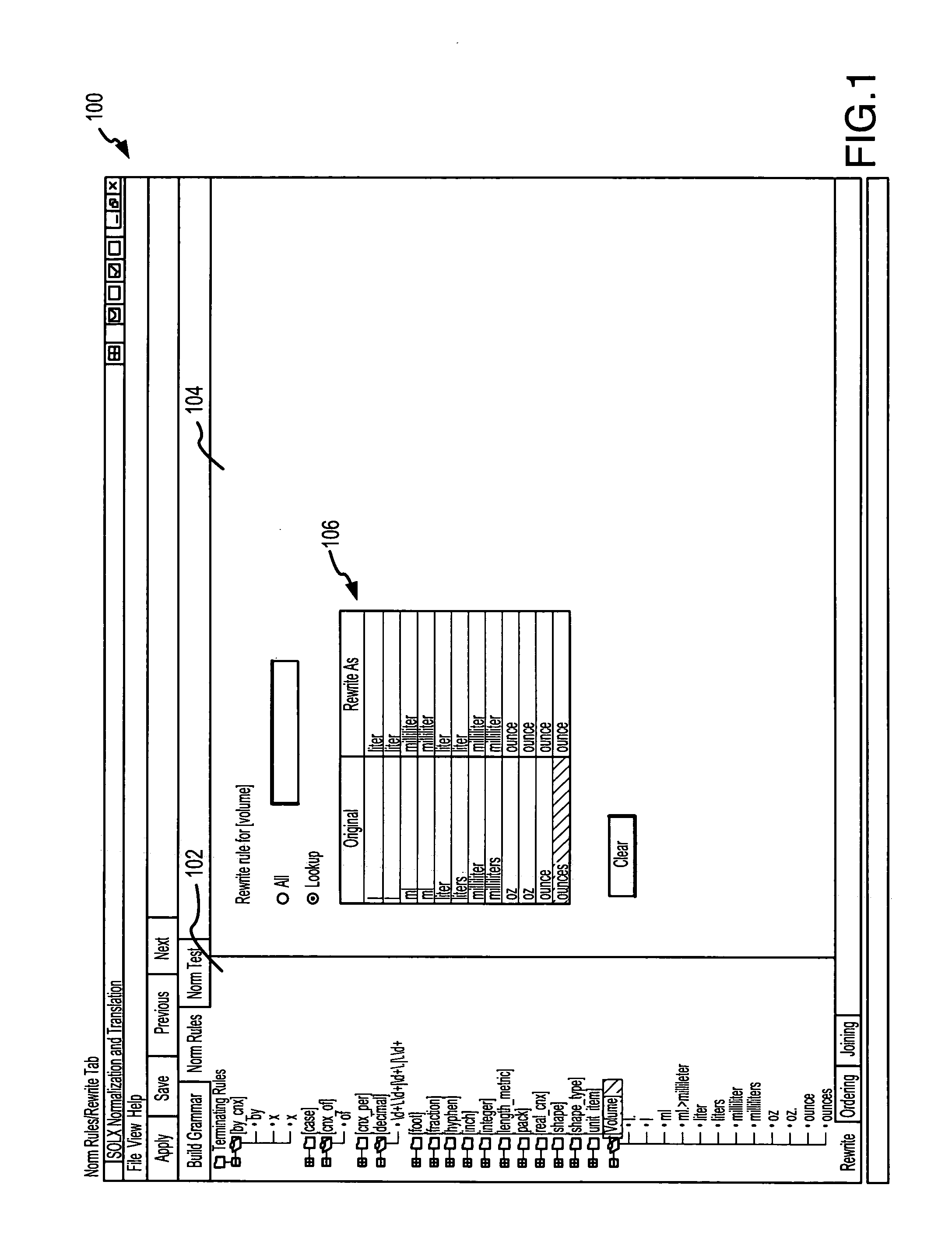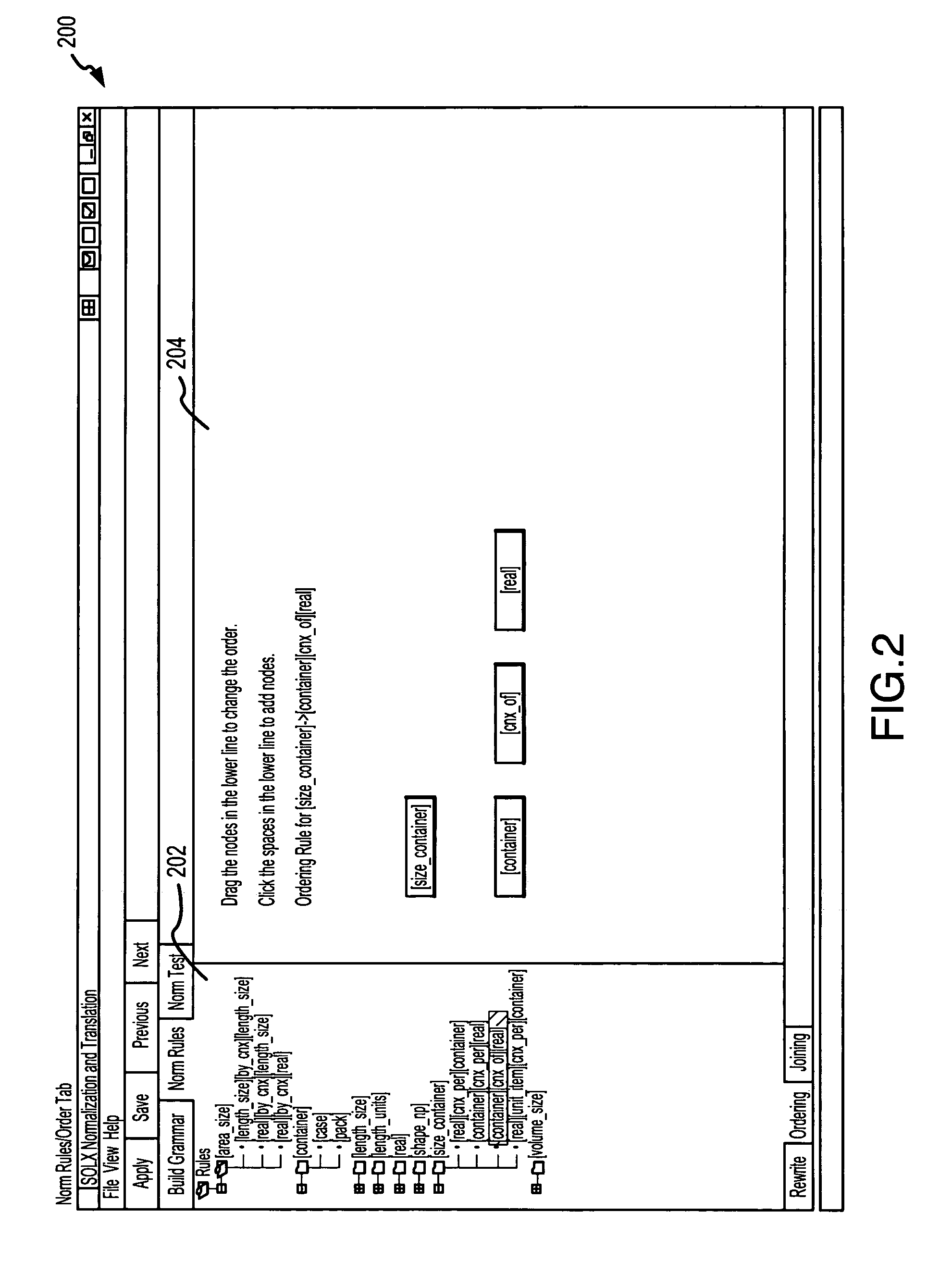[0010]The invention has particular advantages with respect to transformation of business content. For the reasons noted above, transformation of business content presents special challenges. At the same time the need for business content transformation is expanding. It has been recognized that business content is generally characterized by a high degree of structure and reusable “chunks” of content. Such chunks generally represent a core idea, attribute or value related to the business content and may be represented by a character, number,
alphanumeric string, word,
phrase or the like. The present invention takes
advantage of these characteristics to provide a framework by which locale-specific content can be standardized as an intermediate step in the process for transforming the content from a source semantic environment to a target semantic environment. Such
standardization may encompass linguistics and
syntax as well as any other matters that facilitate transformation. The result is that content having little or no
syntax is supplied with a standardized syntax that facilitates understanding, the total volume of unique chunks requiring transformation is reduced, ambiguities are resolved and accuracy is commensurately increased and, in general, substantially real-time communication across semantic boundaries is realized. Thus, the
system of the present invention does not assume that the input is fixed or static, but recognizes that the input can be made more amenable to transformation and that such preprocessing is an important key to more fully realizing the ideal of globalization with respect to electronic communications.
[0012]In the context of electronic commerce, the input content may be business content such as a parts listing,
invoice,
order form, catalogue or the like. This input content may be expressed in the internal terminology and syntax (if any) of the source business. In one implementation, this business content is converted into a standardized content reflecting standardized terminology and syntax. The resulting standardized content has a minimized (reduced) set of content chunks for translation or other transformation and a defined syntax for assisting in transformation. The intermediate, converted content is thus readily amenable to transformation. For example, the processed data chunks may be manually or automatically translated using the defined syntax to enable rapid and accurate translation of
business documents across language boundaries.
[0014]According to another aspect of the present invention, a computer-based device is provided for use in efficiently developing a standardized semantic environment corresponding to a source semantic environment. The associated method includes the steps of: accessing a
database of information reflecting a source semantic environment; using the computer-based device to parse at least a portion of the database into a set of source semantic elements and identify individual elements for potential
processing; using the device to select one of the source elements and map it to a standardized semantic element; and iteratively selecting and
processing additional source elements until a desired portion of the source elements are mapped to standardized elements.
[0015]In order to allow for more efficient
processing, the computer-based device may perform a statistical or other analysis of the source database to identify how many times or how often individual elements are present, or may otherwise provide information for use in prioritizing elements for mapping to the standardized
lexicon. Additionally, the device may identify what appear to be variations for expressing the same or related information to facilitate the mapping process. Such mapping may be accomplished by associating a
source element with a standardized element such that, during transformation, appropriate code can be executed to replace the
source element with the associated standardized element. Architecturally, this may involve establishing corresponding tables of a
relational database, defining a corresponding
XML tagging structure and / or establishing other definitions and logic for handling structured data. It will be appreciated that the “
standardization” process need not conform to any industry, syntactic, lexicographic or other preexisting standard, but may merely denote an
internal standard for mapping of elements. Such a standard may be based in whole or in part on a preexisting standard or may be uniquely defined relative to the source semantic environment. In any case, once thus configured, the
system can accurately transform not only known or recognized elements, but also new elements based on the developed
knowledge base.
[0016]The mapping process may be graphically represented on a
user interface. The interface preferably displays, on one or more screens (simultaneously or sequentially), information representing source content and a
workspace for defining standardized elements relative to source elements. In one implementation, as source elements are mapped to standardized elements, corresponding status information is graphically shown relative to the source content, e.g., by highlighting or otherwise identifying those source elements that have been mapped and / or remain to be mapped. In this manner, an operator can readily select further elements for mapping, determine where he is in the mapping process and determine that the mapping process is complete, e.g., that all or a sufficient portion of the source content has been mapped. The mapping process thus enables an operator to maximize effective mapping for a given time that is available for mapping and allows an operator to define a custom transformation “dictionary” that includes a minimized number of standardized terms that are defined relative to source elements in their native form.
[0018]The second content may be provided in the form of tags or other context cues that serve to schematize the source information. For example, the second content may be useful in defining
phrase boundaries, resolving linguistic ambiguities and / or defining family relationships between source chunks. The result is an information added input for transformation that increases the accuracy and efficiency of the transformation.
 Login to View More
Login to View More  Login to View More
Login to View More 


